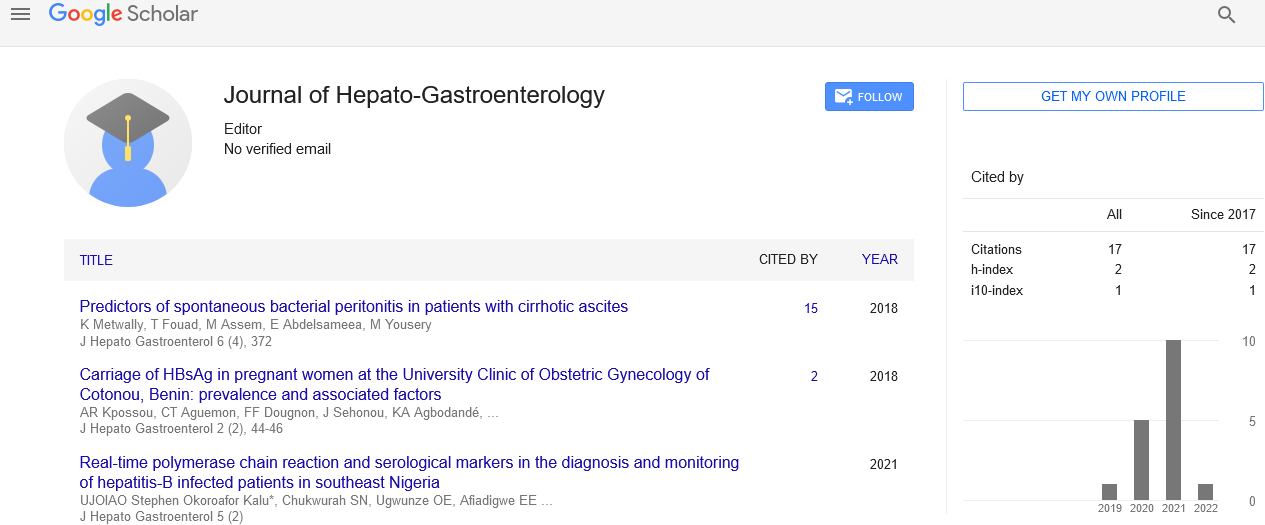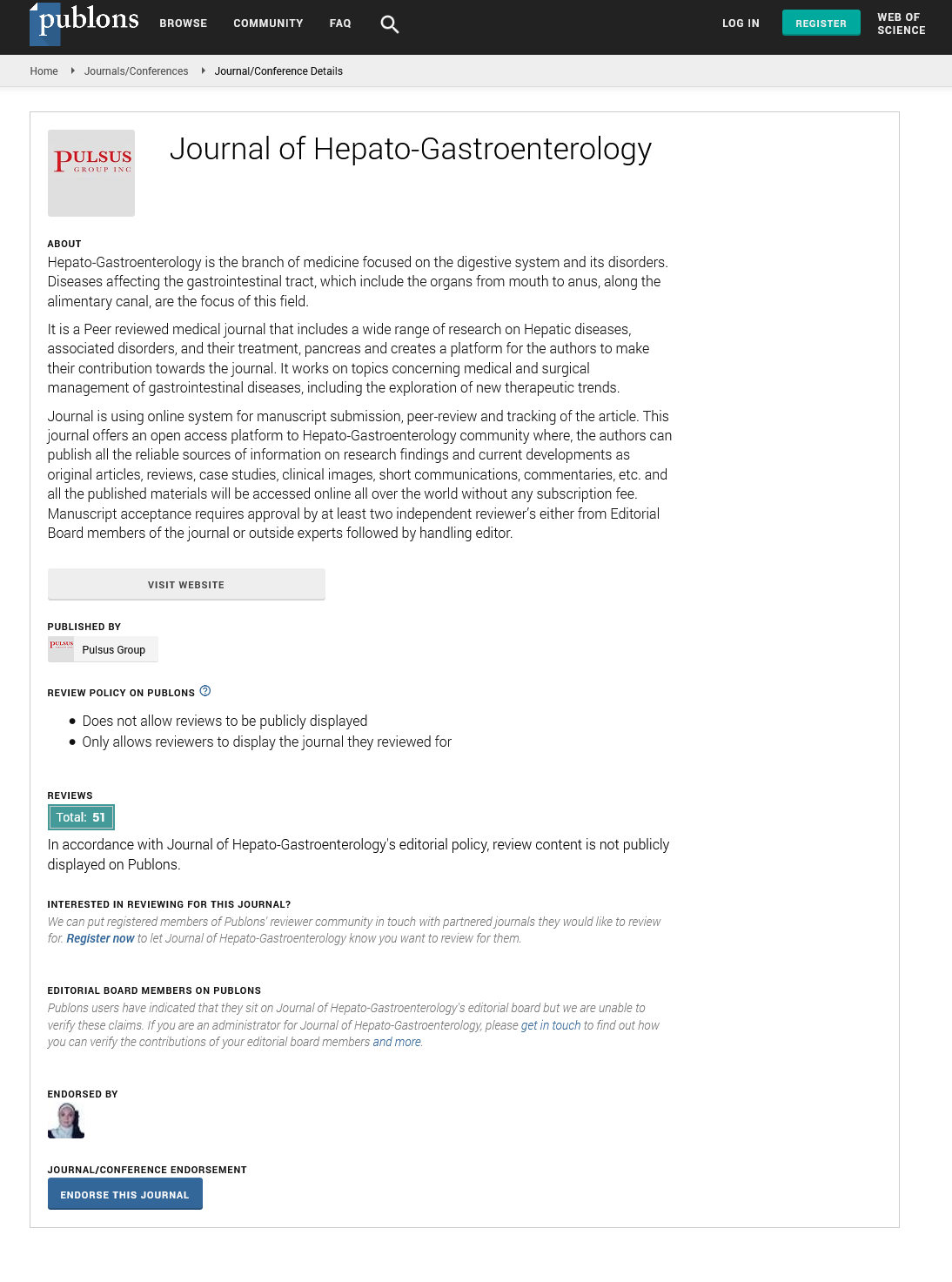A short note on bile acid
Received: 05-Jan-2022, Manuscript No. PULHG-22-4366; Editor assigned: 10-Jan-2022, Pre QC No. PULHG-22-4366; Accepted Date: Jan 07, 2022; Reviewed: 15-Mar-2022 QC No. PULHG-22-4366; Revised: 21-Jan-2022, Manuscript No. PULHG-22-4366 (R); Published: 28-Jan-2022, DOI: 10.37532/ pulhg.6.1.1-2
This open-access article is distributed under the terms of the Creative Commons Attribution Non-Commercial License (CC BY-NC) (http://creativecommons.org/licenses/by-nc/4.0/), which permits reuse, distribution and reproduction of the article, provided that the original work is properly cited and the reuse is restricted to noncommercial purposes. For commercial reuse, contact reprints@pulsus.com
Key Words
Epithelial cells, Canaliculi, Hepatic bileIntroduction
In species with a gallbladder (man and most nearby animals besides horses and rodents), further adjustment of bile occurs in that organ. The nerve bladder stores and centers bile during the fasting state. Normally, bile is assembled five-wrinkle in the nerve bladder by digestion of water and little electrolytes – basically, the sum of the regular iotas is held. Bile acids are auxiliaries of cholesterol joined in the hepatocyte. Cholesterol, ingested as a part of the eating routine or got from the hepatic mixture is changed over into the bile acids cholic and chenodeoxycholic acids, which are then formed to an amino destructive (glycine or taurine) to yield the formed construction that is really released into canaliculi. Their amphipathic nature enables bile acids to finish two huge limits: Emulsification of lipid sums: Bile acids have cleaning agent movement on particles of dietary fat which makes fat globules discrete or be emulsified into the minute, small dots. Emulsification isn't digestion thusly, yet is of importance since it unquestionably extends the surface locale of fat, making it open for handling by lipases, which can't get to inside lipid dots. Solubilization and transport of lipids in a liquid circumstance: Bile acids are lipid carriers and can solubilize various lipids by outlining micelles - aggregates of lipids, for instance, unsaturated fats, cholesterol, and monoglycerides-that stay suspended in water. Bile acids are also essential for the transport and osmosis of fat-dissolvable supplements.
Conclusion
Hepatic association of bile acids addresses the greater part of cholesterol breakdown in the body. In individuals, roughly 500 mg of cholesterol are changed over to bile acids and abstained from in bile reliably. This course for removal of overflow cholesterol is doubtlessly huge on the whole animals, but particularly in conditions of huge cholesterol ingestion. In species with a gallbladder (man and most homegrown creatures aside from ponies and rodents), further alteration of bile happens in that organ. The nerve bladder stores and focuses bile during the fasting state. Regularly, bile is moved fivecrease in the nerve bladder by ingestion of water and little electrolytes – basically, every one of the natural particles are held. Emission into bile is a significant course for disposing of cholesterol. Free cholesterol is for all intents and purposes insoluble in fluid arrangements, however, in bile, it is made dissolvable by bile acids and lipids like lecithin. Gallstones, a large portion of which are made transcendently out of cholesterol, result from processes that permit cholesterol to accelerate from the arrangement in bile. The progression of bile is most reduced during fasting, and a larger part of that is redirected into the gallbladder for focus. At the point when chyme from an ingested supper enters the small digestive system, corrosive and to some extent processed fats and proteins invigorate discharge of cholecystokinin and secretin. As talked about already, these intestinal chemical effects affect pancreatic exocrine emissions. They are both additionally significant for discharge and stream of bile: Cholecystokinin: The name of this chemical depicts its impact on the biliary framework-cholecysto-gallbladder and kinin development. The most intense improvement for the arrival of cholecystokinin is the presence of fat in the duodenum. Once delivered, it invigorates constrictions of the gallbladder and normal bile conduit, bringing about the conveyance of bile into the stomach. Secretin: This chemical is emitted in light of corrosive in the duodenum. Its impact on the biliary framework is basically the same as what was found in the pancreas, it animates biliary pipe cells to discharge bicarbonate and water, which grows the volume of bile and expands its stream out into the digestive system
Abstract
Bile acids are steroid acids found dominatingly in the bile of warm blooded animals and various vertebrates. Grouped bile acids are incorporated in the liver. Bile acids are formed with taurine or glycine stores to give anions called bile salts. Fundamental bile acids are those mixed by the liver. Bile is a multifaceted fluid containing water, electrolytes and a battery of normal particles counting bile acids, cholesterol, phospholipids and bilirubin that courses through the biliary bundle into the little intestinal system. Bile contains bile acids, which are essential for digestion and maintenance of fats and fatdissolvable supplements in the little intestinal system. Many waste things, including bilirubin, are discarded from the body by release into bile and end in excrement. Grown-up individuals produce 400 ml to 800 ml of bile consistently, and various animals proportionately similar aggregates. The release of bile can be considered to occur in two stages: Right away, hepatocytes discharge bile into canaliculi, from which it streams into bile channels. This hepatic bile contains enormous measures of bile acids, cholesterol and other normal particles. As bile travels through the bile channels it is modified by extension of a watery, bicarbonate-rich emanation from ductal epithelial cells.






